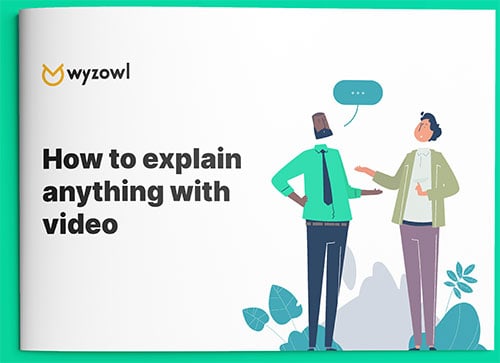Last updated on 17th May 2022
We all know that video marketing is big business.
We know that brands use it to attract audiences, explain products and services, and to educate and support their people.
But instead of being all vague and fluffy about it, it’s fascinating to actually put some numbers behind some of these trends.
Every year since 2015, we’ve launched an annual State of Video Marketing survey that seeks to chart the ups and downs of the industry – including spend, ROI, platforms, audience perceptions and more.
In this post, we wanted to share just a few highlights of our most recent survey – as well as some of the trend data we’ve built up over the years of running this sruvey.
To kick off let’s look at the time people spend in front of video content:
1. 86% of businesses use video as a marketing tool.
It’s clear that the number of marketers using video in their business is consistently high.
When we first asked this question in 2016, just 61% told us they used video – and this has seen a clear increase in the intervening years. It rose to 63% in 2017, 81% in 2018, 87% in 2019, 85% in 2020, 86% in 2021 and, obviously, 86% in our most recent survey.
2. 92% of marketers who use video say that it’s an important part of their marketing strategy.
What’s clear from this data point is that video isn’t just something marketers use arbitrarily, but a cornerstone of their marketing success!
This is another number that’s on the rise.
We first asked this question in 2015, and only 78% said they considered video an important part of their strategy. This has ticked up to 88% in 2016, 82% in 2017, 85% in 2018, 91% in 2019, 92% in 2020, 93% in 2021 and back to 92% in our most recent results.
4. 96% of people have watched an explainer video to learn more about a product or service.
This number is surprising because of just how close to unanimous it is.
An explainer video – a short, 1-2 minute video that explains the nuts and bolts of a product or service – is a great way to introduce yourselves to a new audience. Many brands have great success by using an explainer video in a prominent position on their web page, social channels and more.
And the numbers here speak for themselves: 96% of people have watched one of these videos to find out more about a product or service.
5. 88% of people say that they’ve been convinced to buy a product or service by watching a brand’s video.
And this takes it to the next level. Not only do people watch videos to further their education, video actually helps them reach purchase decisions.
What’s more, this isn’t limited to physical products. A slightly smaller – but still significant – 78% of people say they’ve been convinced to buy or download a piece of software or app by watching a video.
The takeaway here: if you’re looking to help get your audience to the purchase decision, video is a smart way to do it!
6. 94% of video marketers say video has helped increase user understanding of their product or service.
This proves how powerful a tool video is for helping people understand a product or service.
And audience understanding doesn’t just build excitement and fuel purchase decisions – it manages expectations, which means people have a better grasp of what to expect when they buy.
This can help them get the best possible customer experience, reducing dissatisfaction and refunds/returns based on false expectations.
7. People watch an average of 19 hours of online video per week.
We already know that people watch a lot of video.
But this is another metric that’s surging.
In fact, our most recent survey shows an increase of 1 hour per week compared to 12 months ago, and a staggering 8.5 hour increase per week across the past 4 years.
8. When asked how they’d most like to learn about a product or service, 73% said they’d prefer to watch a short video.
This compares to 11% who’d rather read a text-based article, website or post, 4% who’d like to view an infographic, 3% who’d rather download an ebook or manual, 3% who’d rather attend a webinar or pitch, and 3% who’d like a sales call or demo.
9. People are twice as likely to share video content with their friends than any other type of content, including social media posts, blog posts/articles and product pages.
‘Reach’ is a key metric of any marketing content: ultimately, it can’t work if people don’t see it.
One of the beautiful things about video, as evidenced by this data point, is that your audience is generally more likely to share it than any other type of content – which can help amplify the organic reach of your content, boosting ROI.
10. 87% of video marketers say video, in general, gives them a good return on their investment.
And, ultimately, the thing you’re interested in when you spend money on creating a marketing asset: is it going to work?
This statistic conclusively suggests that, where marketers spend on video, they’re overwhelmingly satisfied with the money that comes back to them – through leads, sales, reduced support queries, customer satisfaction and repeat sales.
Final thoughts
The data on the whole paints a rosy picture of the video marketing landscape; marketers are routinely reporting increased traffic, user understanding and sales as a result of their video marketing efforts.
Consumers are telling us they’re actively using video as part of their research and decision-making process – and that they want to see more of it from brands going forward.
The only cautionary note we’d add is that, as more video content reaches the market, it’s never been more important to make sure that your video content is on-point. In the increasingly noisy world of video marketing, only the clearest, sharpest voices will break through!
Remember – to see all the survey findings in full and get a downloadable report, click here!







